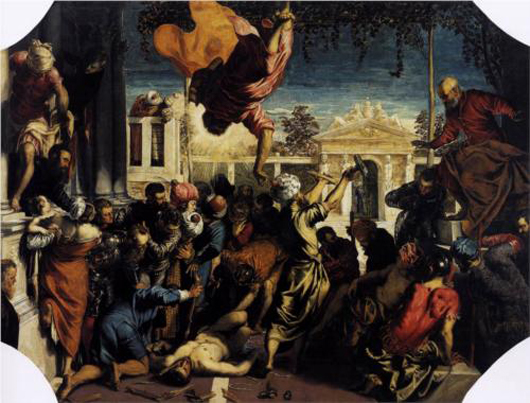
ROME (AFP) – An exhibition honoring 16th-century Venetian master Tintoretto opens in Rome on Saturday, following the painter’s career from his days as an ambitious disciple of Titian to a bitter old age.
“Tintoretto was the most controversial painter of his time,” Melania Mazzucco, one of the organisers, told reporters in the Italian capital.
“His experimental way of painting, the speed with which he worked and his prolific aspect, his aggressive and competitive character evoked very strong reactions among his contemporaries,” said Mazzucco, a Tintoretto expert.
Tintoretto, whose real name was Jacopo Robusti, owed his nickname to his father who was a manufacturer of dyes (“tinta” in Italian). He became one of the greatest practitioners of the Venetian style.
The exhibition, which runs until June 10, begins with one of his monumental works The Miracle of the Slave (1548), measuring 4.16 metres by 5.44 metres (14 feet by 18 feet) and normally jealously guarded in Venice.
The choice of putting a slave at the center of the painting instead of the saint who is rescuing him was considered scandalous at the time.
Another masterpiece in the show is The Theft of the Body of Saint Mark (1564) showing a group of Christians in Alexandria taking away the saint’s body from a bonfire that has been miraculously extinguished by rain.
Apart from religious and mythological subjects, Tintoretto also painted hundreds of portraits—a source of revenue from aristocrats, writers and celebrities that he used for contacts and protection.
Tintoretto’s pride was legendary. He once turned down a knighthood from French king Henry III because he did not want to kneel down and he refused to allow his beloved daughter Marietta to leave his home.
His final years were cruel to the painter. Marietta died in 1590, followed by his son Giovanni Battista. His last self-portrait shows a somber and humbled Tintoretto, his face marked by the harshness of life.
His last child died in a convent in 1652, leaving him without descendants.
ADDITIONAL IMAGE OF NOTE


